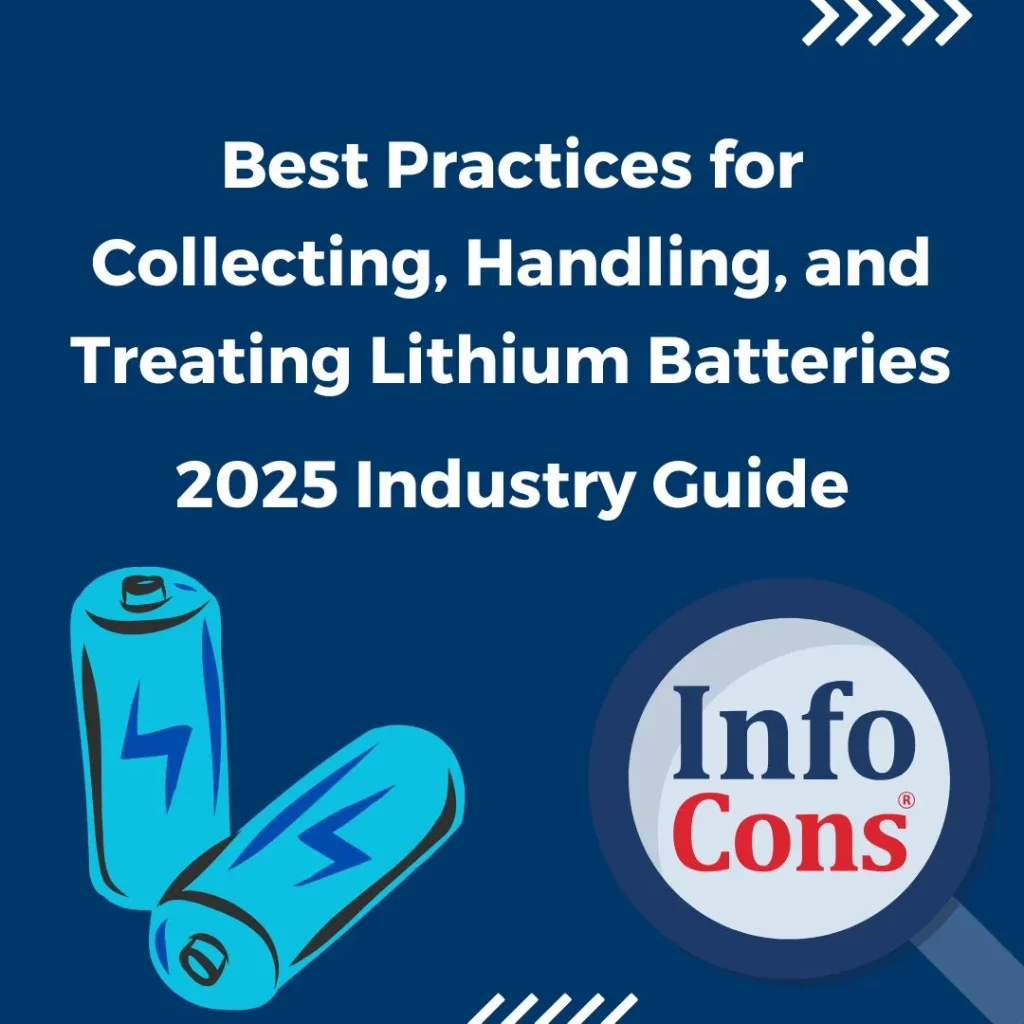
The proliferation of lithium batteries in modern electronic devices and light means of transport (LMT) has led to significant challenges in waste management, particularly concerning fire hazards and environmental impacts. In response, eight industry associations, in collaboration with Insurance Europe, have developed this guidance document to provide clarity on technical fire protection criteria and outline best practices for managing lithium battery waste. This initiative builds upon studies conducted in 2019 and 2020 by the industry and the Batteries Roundtable, addressing the growing issue of fires associated with waste electrical and electronic equipment (WEEE) containing lithium batteries.
The Rising Challenge of Lithium Battery Waste
Lithium batteries are integral to a vast array of electrical and electronic products, as well as LMT equipment such as e-bicycles, e-scooters, and e-skateboards. While they offer efficient energy storage, their presence complicates repair, treatment, and disposal processes, often leading to thermal events. Fires caused by lithium batteries pose significant risks to the repair and refurbishment sectors, as well as the entire WEEE and battery management chains.
The financial implications are substantial. Fires linked to waste batteries cost waste management facilities millions of euros annually due to production downtime, material damage, worker injuries, and reconstruction expenses. These incidents often result in increased insurance premiums or difficulties in securing insurance coverage, potentially affecting operational permits that require specific insurance conditions. Beyond the economic impact, lithium battery fires harm the environment and hinder the recovery of valuable secondary raw materials contained within the destroyed batteries.
Read also : Closing the Gender Gap in Science : The Role of The International Day of Women and Girls in Science
Stakeholder Responsibilities in Lithium Battery Management
Effective management of lithium batteries and WEEE containing these batteries necessitates the involvement of various stakeholders throughout the product lifecycle:
- Producers (Manufacturers, Importers, etc.): Responsible for designing products that facilitate safe battery removal and disposal.
- Producer Responsibility Organisations (PROs) and Collection Schemes: Obligated to establish and implement collection and recycling programs, ensuring that discarded batteries are appropriately managed.
- Municipalities: Play a crucial role in providing accessible collection points and educating the public on proper disposal methods.
- Preparing for Re-use Operators and E-waste Recyclers: Tasked with safely handling, refurbishing, and recycling batteries and electronic devices.
- Consumers: Encouraged to remove batteries from products when replacing them or discarding the item and to dispose of them at designated collection points rather than with general waste.
The European Battery Regulation (Article 11) mandates that by 2027, all portable batteries embedded in portable appliances and those within LMT equipment must be removable and replaceable by the user or a professional re-use operator. Exceptions exist for products requiring continuous power or data, and those where water ingress may impede safety. For most new products placed on the market in 2027, batteries must be removable and, if re-use is intended, replaceable. The final step involves disposing of discarded batteries correctly at designated collection points.
Scope of the Guidance Document
This guidance document aims to provide examples of good practices across all aspects of the waste lithium battery chain to mitigate risks and assist with the health and safety management of personnel, plant, and equipment. Where relevant, it references legal obligations and policies to offer further instructions or information.
It is important to note that this guidance does not cover the management and controls needed for the packaging, transportation, storage, and onward sale of new lithium batteries. While incidents of fires due to lithium batteries are prevalent in single-type battery collection and e-waste treatment streams, similar risks exist in other waste streams, such as general waste, textile waste, waste packaging, and end-of-life vehicle recycling. These sectors are not included in this guidance due to their distinct characteristics and regulatory frameworks.
Read also : Disability and Social Participation : How Engagement Rates Differ in the EU
Understanding Lithium Batteries
The term “lithium battery” refers to a family of batteries with different chemistries, comprising several types of cathodes and electrolytes. They are generally divided into two categories, corresponding to two UN classification numbers:
- Lithium Metal Batteries (UN 3090): These are primary (non-rechargeable) batteries that use lithium metal or lithium metal alloy as an anode. Some rechargeable lithium metal batteries are also on the market. In portable battery applications, lithium metal batteries are generally used in most electrical and electronic appliances sold today for memory backup.
- Lithium-Ion Batteries (UN 3480): These are generally secondary (rechargeable) batteries based on intercalation technologies, where lithium is present only in ionic form in the electrolyte and intercalated in the anode (e.g., graphite or lithium-titanate). They are commonly used to power portable devices such as ICT equipment, power tools, LMT equipment, other electromobility vehicles (hybrid or plug-in), and energy storage systems.
Intended Audience for the Guidance Document
This guidance is recommended for:
- Waste Municipal Recycling Personnel: Individuals handling e-waste, including e-mobility equipment, received from households.
- Waste Collection Site Personnel: Staff at retail or supermarket collection points dealing with e-waste and/or loose lithium batteries.
- Waste Logistics Personnel: Operators involved in household refuse collection, kerb-side collectors, and transport operators collecting e-waste (including e-mobility equipment) that may contain lithium batteries and loose lithium batteries (either sorted as just lithium batteries or unsorted mixed chemistry batteries).
- E-waste Facility Personnel: Individuals accepting e-waste (including e-mobility equipment) that may contain lithium batteries for disassembly and treatment.
- Battery Recycling Facility Personnel: Staff involved in sorting batteries into different chemistries and/or carrying out recycling operations.
- Officials at Policy-Making Institutions: Personnel at market surveillance, inspection, and environmental agencies.
Read also : EU Exports and Imports of Services Reach New Heights , According to Recent Data
To read the full Industry guidance for collecting, handling, and treating waste lithium batteries, click HERE .
InfoCons – European Organization for Consumer Protection and Promotion of Programs and Strategies , a full member of the World Organization Consumers International, founding member of the Federation of Consumer Associations, and member of ANEC .